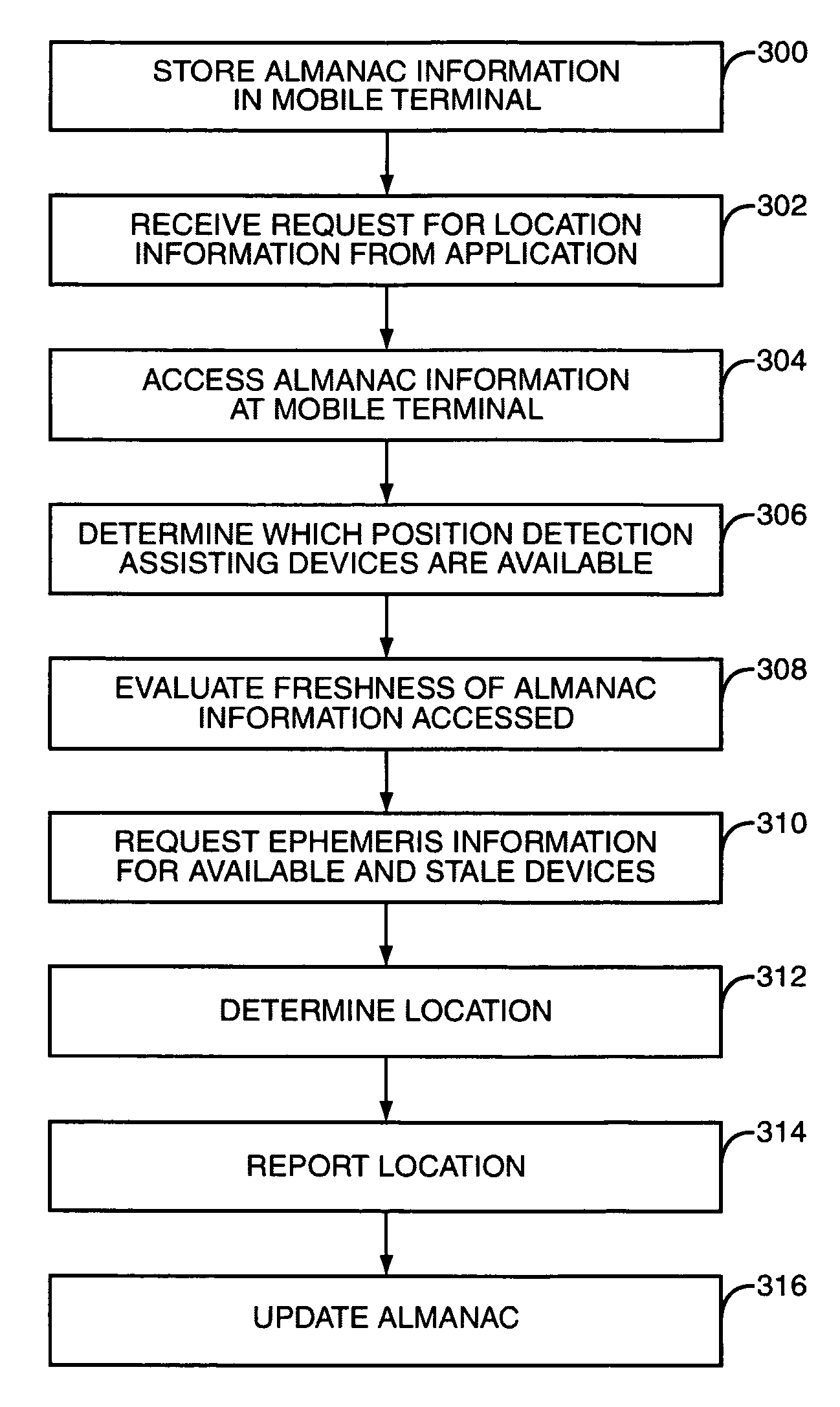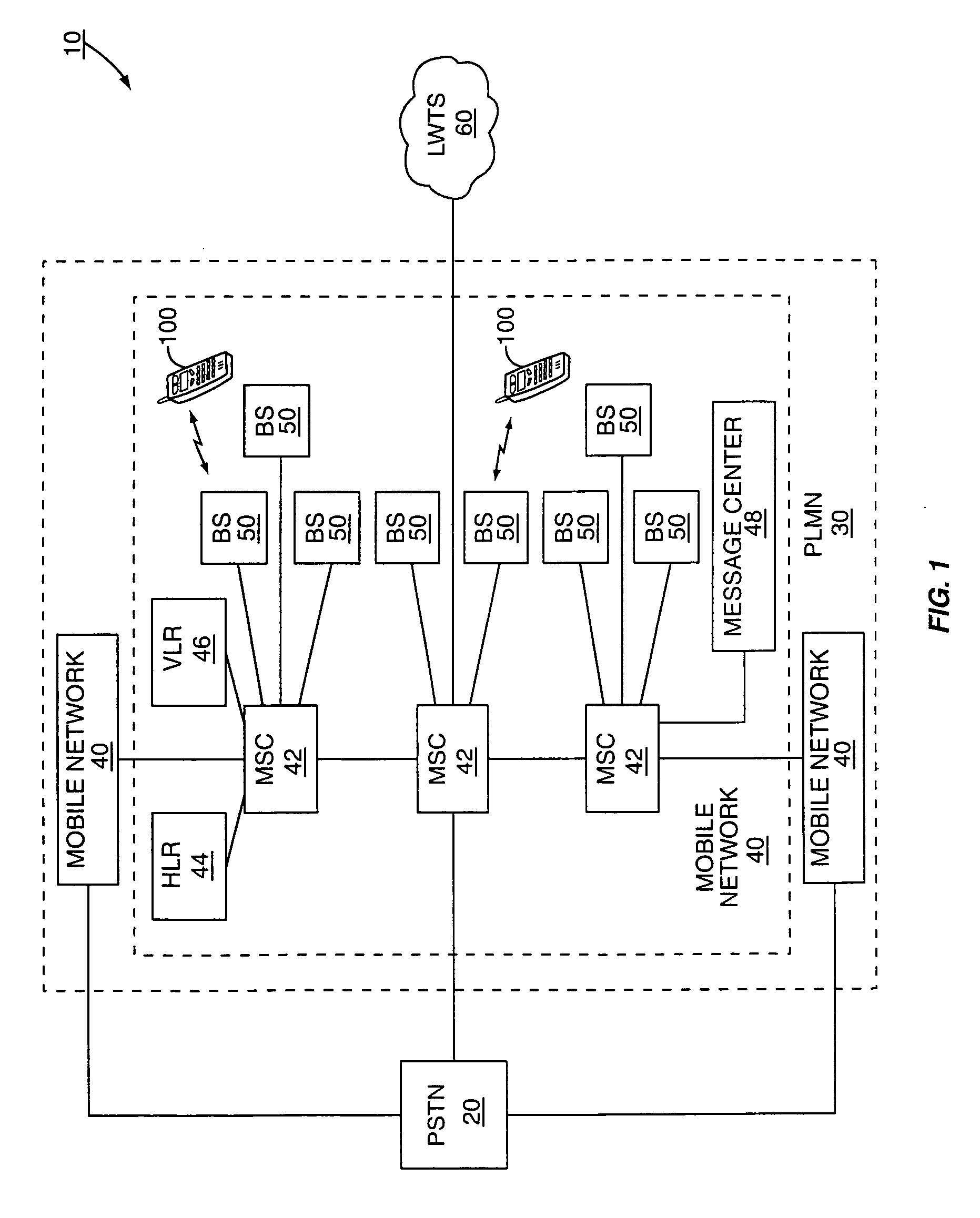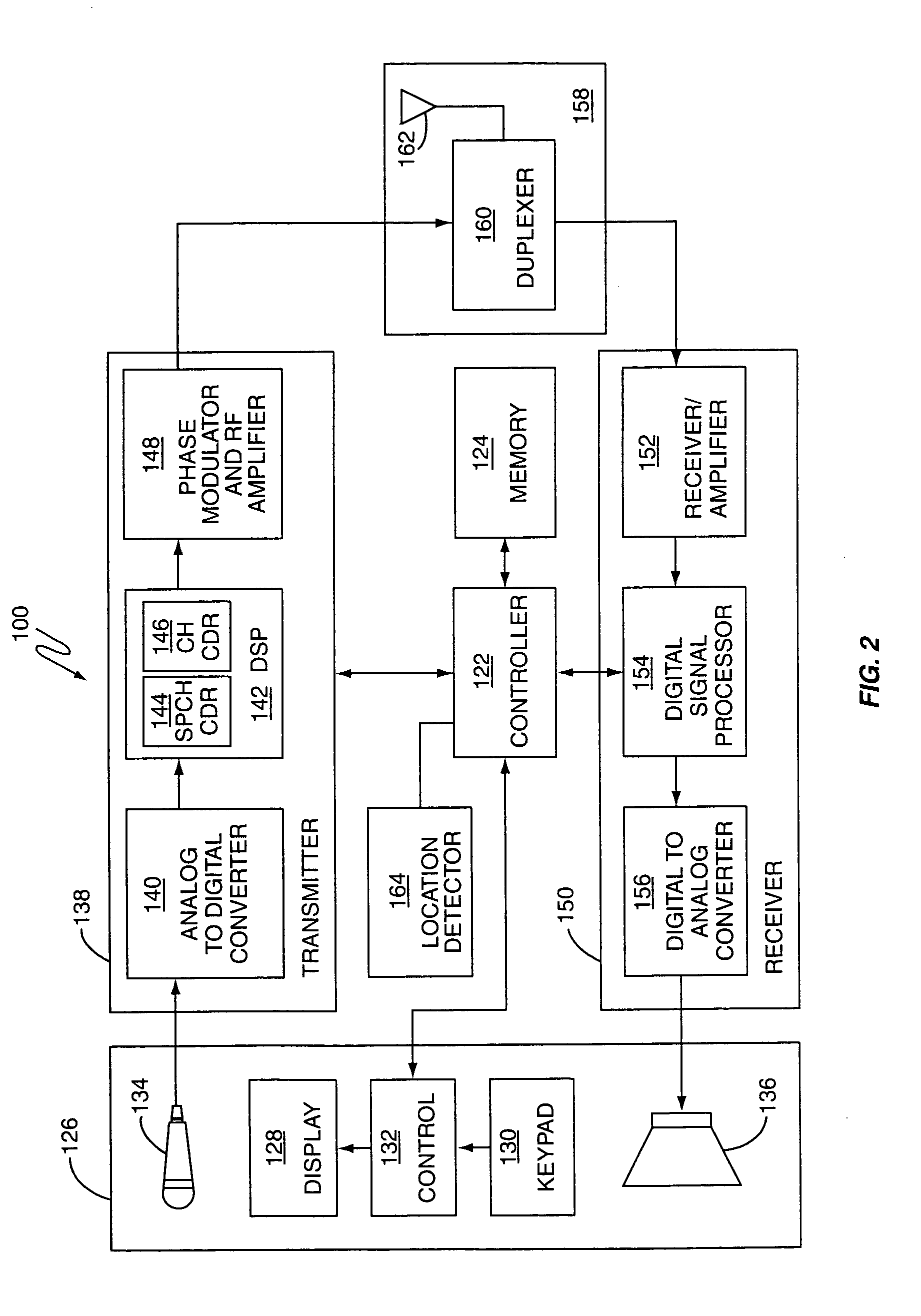Position detection system integrated into mobile terminal
a technology of position detection and mobile terminal, which is applied in the field of mobile terminal integrated with position detection system, can solve the problems of consumer frustration, gps data transfer rate extremely slow, other positioning system may experience similar delays, etc., and achieve the effect of reducing information amount, reducing time taken, and conserving bandwidth
- Summary
- Abstract
- Description
- Claims
- Application Information
AI Technical Summary
Benefits of technology
Problems solved by technology
Method used
Image
Examples
Embodiment Construction
[0020]The present invention is directed to an improvement on communication between mobile terminals and a mobile network wherein the communication is used to facilitate position detection by the mobile terminal. An understanding of an entire communications system and mobile terminal may be helpful for a proper understanding of the context of the present invention. While the following discussion is couched in terms of a TIA / EIA-136 communication system, it should be appreciated that the present invention is equally applicable to Digital Advance Mobile Phone Service (D-AMPS), European Total Access Communication System (ETACS), Code Division Multiple Access (CDMA), Global System for Mobile Communication (GSM), Pacific Digital Cellular (PDC), and the like, the standards and documentation of which are herein incorporated by reference.
[0021]Turning now to FIG. 1, a communication system 10 is illustrated. In particular, the communications system 10 includes the Public Switched Telephone Ne...
PUM
 Login to View More
Login to View More Abstract
Description
Claims
Application Information
 Login to View More
Login to View More - R&D
- Intellectual Property
- Life Sciences
- Materials
- Tech Scout
- Unparalleled Data Quality
- Higher Quality Content
- 60% Fewer Hallucinations
Browse by: Latest US Patents, China's latest patents, Technical Efficacy Thesaurus, Application Domain, Technology Topic, Popular Technical Reports.
© 2025 PatSnap. All rights reserved.Legal|Privacy policy|Modern Slavery Act Transparency Statement|Sitemap|About US| Contact US: help@patsnap.com



